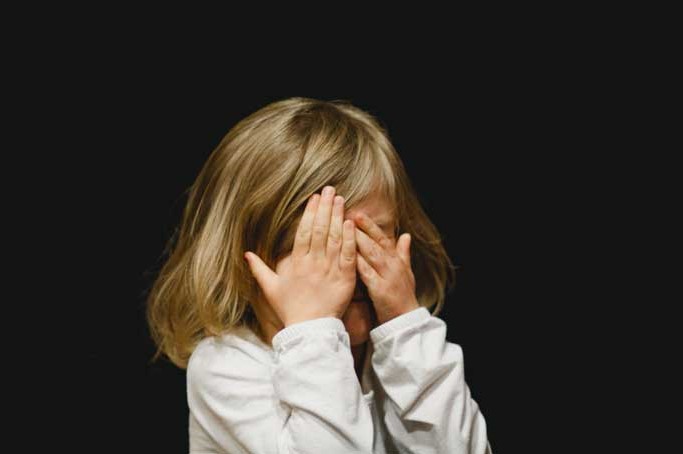
Shame and guilt: maladaptive strategies in victims of sexual abuse
A look at victims of sexual abuse: childhood experiences, play a significant role in shaping an individual’s sense of self
Child sexual abuse (CSA), is a highly stigmatising experience (Kennedy & Prock, 2018) that leaves the child and adult with a perception of being deeply flawed and damaged as a human being (Alaggia et al., 2017; Böhm, 2017; Dorahy & Clearwater, 2012).
Working with abused people often means confronting their emotions such as shame and guilt: “What is wrong with me? I provoked the violence!”
Shame is a complex emotion, socially induced and characterised by specific thoughts, behaviour and physiological reactions.
This emotion indicates the sharing of certain social norms and has an adaptive function that enables the individual to persist in group membership and maintain survival (Del Rosso, 2014).
Child sexual abuse
It will be easier for the abused child to develop shame associated with a self-image as wrong, inadequate, unworthy, than to blame the caregiver and to renounce both family group membership and survival, being unable to provide for themselves (Montano & Borzì 2019).
Patients, who have experienced trauma, often manifest emotions of intense anger, behind which are hidden experiences of shame.
Shame in PTSD (post-traumatic stress disorder) is secondary to the patient’s attribution processes and core beliefs and correlates positively with self-criticism and negatively with self-assurance (Harmann and Lee 2010).
Guilt is also a frequent emotion in survivors but, unlike shame, it is evoked by the perception of having committed harm on others, which causes guilt to take on a more moral connotation and promote restorative behaviour.
For some victims blaming themselves is a ‘strategy’ to explain the abuse and perceive that they have control over the traumatic experience: ‘I caused the abuse’, ‘I trusted too much’, ‘I deserve this punishment’.
Other patients internalise the abuser’s words: “It was you who made me do this” and store them as true.
Studies on adults with a history of sexual abuse
In studies of adults, sexual assault has been associated with higher levels of shame and guilt than other traumatic experiences (Amstadter e Vernon, 2008 ).
De Cou et al. (2019) found that over 75 per cent of college women survivors of sexual assault reported experiencing trauma-related shame, while Wetterlöv et al. (2020) also found an association between shame and sexual trauma in adolescent girls.
CSA-related shame can lead to increased suicidal ideation, substance use and re-victimisation (Aakvaag et al., 2018; Alix et al., 2017; Holl et al., 2017; Kealy et al., 2017).
Cognitive models of PTSD (G.Hepp, 2021, A. Ehlers, 2000; PA Resick 1993), argue that there are important cognitive alterations in the trauma patient.
In detail, it is theorised that trauma leads to negative cognitions regarding trust (e.g., ‘I can’t trust anyone’), safety/threat (e.g., ‘Most people and contexts are dangerous’), power (e.g., ‘I have no control over what happens to me’), self-esteem (e.g., ‘I am forever changed’), and intimacy (e.g., ‘I can’t be close to anyone’).
The greater the degree of child maltreatment (CM), the more difficult it will be to change in terms of confidence, security (G.Hepp, 2021).
Conclusions
Sexual victimisation violates physical, emotional and sexual integrity and is therefore known to produce shame and guilt.
Avoidance is one of the coping responses to CSA and can prevent victims from acknowledging their own response of shame and guilt related to the experience of sexual abuse (Dorahy et al., 2017).
In the clinical context, it therefore becomes crucial to delve into such maladaptive strategies and reveal the meaning processes of shame and guilt related to abuse in order to then plan an effective therapeutic intervention.
Sexual abuse, sitography
https://www.istitutobeck.com/beck-news/trauma-infantile-dissociazione-e-disturbi-alimentari
Bibliography
2019 – Montano, R. Borzì (2019) “Manuale di intervento sul trauma”. Edizione Erickson, 2019.
Read Also:
Emergency Live Even More…Live: Download The New Free App Of Your Newspaper For IOS And Android
Microaggressions: What They Are, How To Deal With Them
Gender-Based Violence In Emergencies: UNICEF Actions
Sexual Harassment In Medical Profession: Legal And Ethical Responsibilities
Bullying And Harassment At Work – One-Third Of Doctors Feel Threaten
#ORANGETHEWORLD – International Day For The Elimination Of Violence Against Women And Girls
Shaken Baby Syndrome: The Very Serious Damage Of Violence On The Newborn Child
Violence Against EMS Providers – Paramedics Assaulted On A Stabbing Scenario
November 25, Violence Against Women Day: The 5 Signs Not To Underestimate In A Relationship
In Daily Life: Dealing With The Paranoid
Paranoid Personality Disorder: General Framework
The Developmental Trajectories Of Paranoid Personality Disorder (PDD)
Reactive Depression: What It Is, Symptoms And Treatments For Situational Depression
Baby Blues, What It Is And Why It Is Different From Postpartum Depression


